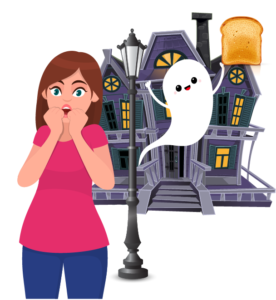Y1. Lesson 17. High & low [one-line staff]
Prior learning: High & low sounds.
Duration: 30 minutes
Materials:
Keywords: Beat, rhythm, singing, chanting, partners, rhymes, circle games.
Difficulty: ![]()
Prepare
Present
High & low sounds [single line]
Practise
ta & ti-ti, hand signs
 Melodic development
Melodic development
![]() Students discover that the high and low sounds can be represented on a single line staff.
Students discover that the high and low sounds can be represented on a single line staff.
- Students are seated and attentive.
- Invite students to sing Goodnight with beautiful singing voices."
- Ask if the song has high and low sounds.
- Invite students to sing and show the hand signs for high and low sounds.
- Explain that the class will sing Goodnight, as they have done many times before, but instead of singing the usual words, they will sing using only the words high & low
- When secure, project (or draw) the graphic and ask the class if they recognise what it shows.
- Explain that the high sound of the song sits above the line and the low sound below the line.
- Teach that this line is called a staff, and a staff can have more than one line.
- Ask a volunteer to come forward and point to each symbol in turn as the class sing the song. Repeat with another volunteer.
- Choose a student and ask them to sing the song using only high and low. Repeat as time permits.
 Rhythmic development
Rhythmic development
![]() Students practise rhythmic syllables ta and titi through chanting and recognising symbols.
Students practise rhythmic syllables ta and titi through chanting and recognising symbols.

Miss White had a fright.
In the middle of the night.
Saw a ghost eating toast.
Halfway up a lamp post!
- Project the rhythm icons of Miss White on the board.
- Teach the rhyme to the class using a measured cadence and point to each rhythmic syllable in turn.
- When secure, ask a volunteer to point to each syllable as the class repeats the rhyme. Repeat as time permits.
- Now speak the rhyme using the rhythmic syllables as shown and invite the class to repeat them after you
- When secure, choose a student to come to the front and repeat the syllables with you.
- Ask the class if they have ever seen a ghost eating toast!
- For extra ghosty fun, project or print the two ghost patterns and ask students to spell them using the syllable ta and titi.
 Creative movement
Creative movement
![]() Students use the words high and low in this circle game.
Students use the words high and low in this circle game.
- Students form a circle.
- Lead the class in singing the song.
- Have a bear puppet in your hand, and as the class sing, pretend that the bear eats honey from the student's hands as you patrol around the perimeter of the circle.
- Ask the class to substitute high and low for the lyrics once secure.
- If hand signs are used in your teaching method, the class should sit and demonstrate high and low sounds.
 Questions
Questions
- What does the bear like to eat?
- If the bear eats too much, what will happen?
 Listening
Listening
![]() Students
Students
- Students are seated and attentive.
- Play the beginning of the track on the audio player and ask students if they recognise the music.
- Explain that students will chant and clap ta & ti-ti to the rhythm of the music.
- Lead the class in chanting and clapping ta & ti-ti.
 Visual learning
Visual learning
![]() Students will clap and speak the rhythmic syllables on the worksheets.
Students will clap and speak the rhythmic syllables on the worksheets.
- Project or print the worksheets below.
- Tell the class that they will read the rhythm pattern on the first line and clap and speak the syllables using ta and titi.
- When secure, repeat with the second line. Assess students' accuracy.
- Ask a volunteer to come forward and clap and speak the third rhythmic pattern, offering gentle guidance if required.
- Ask another volunteer to come forward and clap and speak the fourth pattern.
- Extension: Ask a volunteer to come forward and compose a series of four rhythmic syllables and write them on the board.
- Ask the class to repeat back.
 Part work
Part work
![]() Students sing with a chosen student enacting the movements indicated by the lyrics.
Students sing with a chosen student enacting the movements indicated by the lyrics.
- The class is seated in a circle, and a student is chosen to become 'Sally' and remains in the circle's centre.
- The class begins to sing as 'Sally' mimes the movements indicated by the lyrics.
- At the song's end, 'Sally' points to a student who will become the new 'Sally.'
 Assess
Assess
Suggested lessons
Y1. Beat II

Y1. Beat III

Y1. Beat IV

